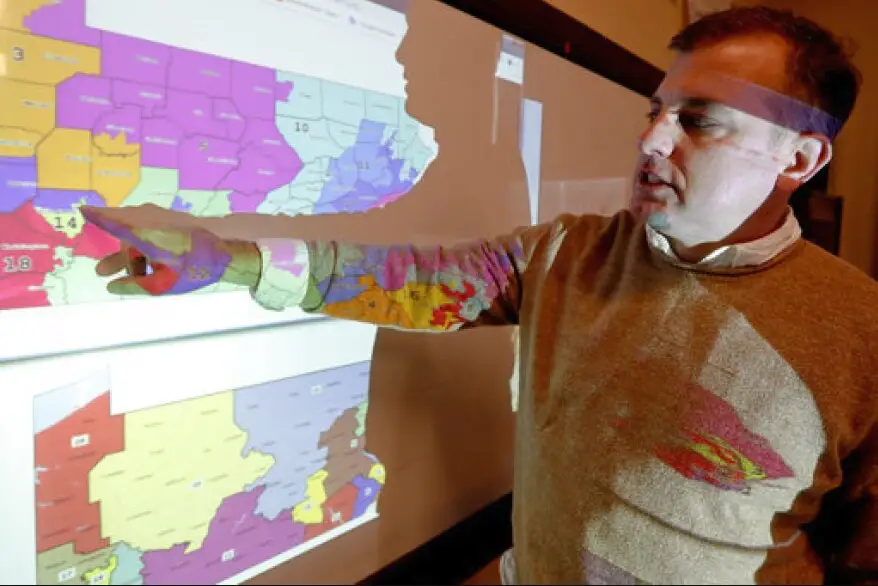In the United States, a battle is underway —sometimes overshadowed by other controversies of Trump’s second administration— that could prove decisive in the immediate future. It is the redrawing of electoral maps. Also known as “gerrymandering,” it is a practice that dates back to the country’s origins and consists of redesigning electoral district boundaries in line with demographic changes in the states, in this case, based on the 2020 census. Both parties have used this process to secure advantages in parliamentary representation according to citizens’ voting patterns. However, the current context is different: the White House is promoting it as an existential priority ahead of the 2026 midterm elections, relying on a 2019 Supreme Court ruling that declared it had no jurisdiction to regulate district manipulation, leaving the door open for states to make adjustments according to their own electoral laws.
But the problem goes beyond legalities. At its core, this is a practice that erodes trust in institutions, since instead of voters choosing their representatives, it is politicians and their calculations who end up choosing their voters. This distorts the essence of democracy and normalizes a model where the priority is not to convince the public but to redraw maps to secure majorities, further entrenching the segmentation of society along partisan lines.
It is important to note that midterm elections traditionally reinforce the opposition’s parliamentary position, as Trump himself experienced during his first term. The 2026 elections will likely be no exception, especially considering the sustained decline in popular support for the Republican Party in recent months. Trump knows this, which explains his interest in ensuring that the redistricting process prevents another congressional blockade like the one he faced in his first administration.
Texas and California: the main players in Gerrymandering 2025
What began in Texas could soon spread to eight other states and become one of the main flashpoints of political polarization in “Trump 2.0.” With the support of Governor Greg Abbott, Republicans seek to redraw their districts to secure as many as five additional seats in the House of Representatives in 2026. The method is simple: divide urban areas with Democratic majorities, such as Houston and Dallas, to dilute the traditional influence of Hispanic and African American voters in these cities.
Tensions are rising in a context marked by a resurgence of political violence: increasingly radical protests, ideologically motivated shootings, attacks on political leaders —such as the one Trump himself suffered in 2024— and even the assassination of conservative activist Charlie Kirk in Utah. A highly polarized country is now mixing electoral manipulation with political dynamics.
For Democrats, the situation presents an uncomfortable dilemma. For years they have denounced gerrymandering, but now, in states like California, they are beginning to consider doing the same to counter the Republicans’ advance in Texas. Governor Gavin Newsom has even floated the idea of redrawing districts under the banner of “defending democracy.” This rhetoric reveals an obvious contradiction: criticizing in Texas what they plan to replicate in California. It underscores that Democrats nationwide still lack a cohesive national strategy to counter a Republican Party that seems one step ahead in this territorial battle.
How is redistricting playing out in other states?
In Florida, the redistricting pushed by Governor Ron DeSantis was ruled unconstitutional by the state Supreme Court, but committees are already preparing new versions of electoral maps, particularly in the state’s northern district. In Ohio, a new map could deliver up to three additional seats to Republicans, thanks to their strong majority in the state legislature. In Indiana and Missouri, both traditionally Republican states, the chances of approving changes remain uncertain due to judicial constraints, although GOP majorities in their legislatures could eventually override them. In Illinois, meanwhile, Democratic Governor JB Pritzker has left the door open to a redistricting that would benefit his party. The pattern repeats: wherever a party holds power, the temptation to manipulate electoral maps prevails.
For now, Republicans dominate the debate, set the strategic agenda, and lead the initiative. Democrats, caught between principle and the need to contain this imminent redistricting push, seem more reactive than proactive. Meanwhile, citizens watch as the political system turns into a chess game where the key factor is not free voting but the geometry of newly drawn districts.
Still, what is at stake goes beyond control of the House of Representatives or the Senate. The deeper concern is that gerrymandering could lose its critics and become normalized. This comes on top of the partisan use of the armed forces and, especially, the rhetoric of an “internal enemy” deployed by the White House. In fact, Trump has ordered troop deployments in Democratic-run cities under the justification of combating irregular migration, crime, and homelessness. Although federal law prohibits the use of military forces for domestic law enforcement, operations have already begun in Los Angeles, Washington D.C., and Austin, with plans to expand to other cities such as Chicago or San Francisco.
These measures reinforce the perception of an “internal enemy” embodied by opposition-led states and cities, eroding pluralism and the tradition of alternation in American democracy. By going unchallenged within his own party, the message is clear: anything goes to secure political control. In this scenario, the true challenge will not only be who wins in 2026 but whether American democracy can withstand this sustained period of extreme polarization and power concentration.
*Machine translation, proofread by Ricardo Aceves.














